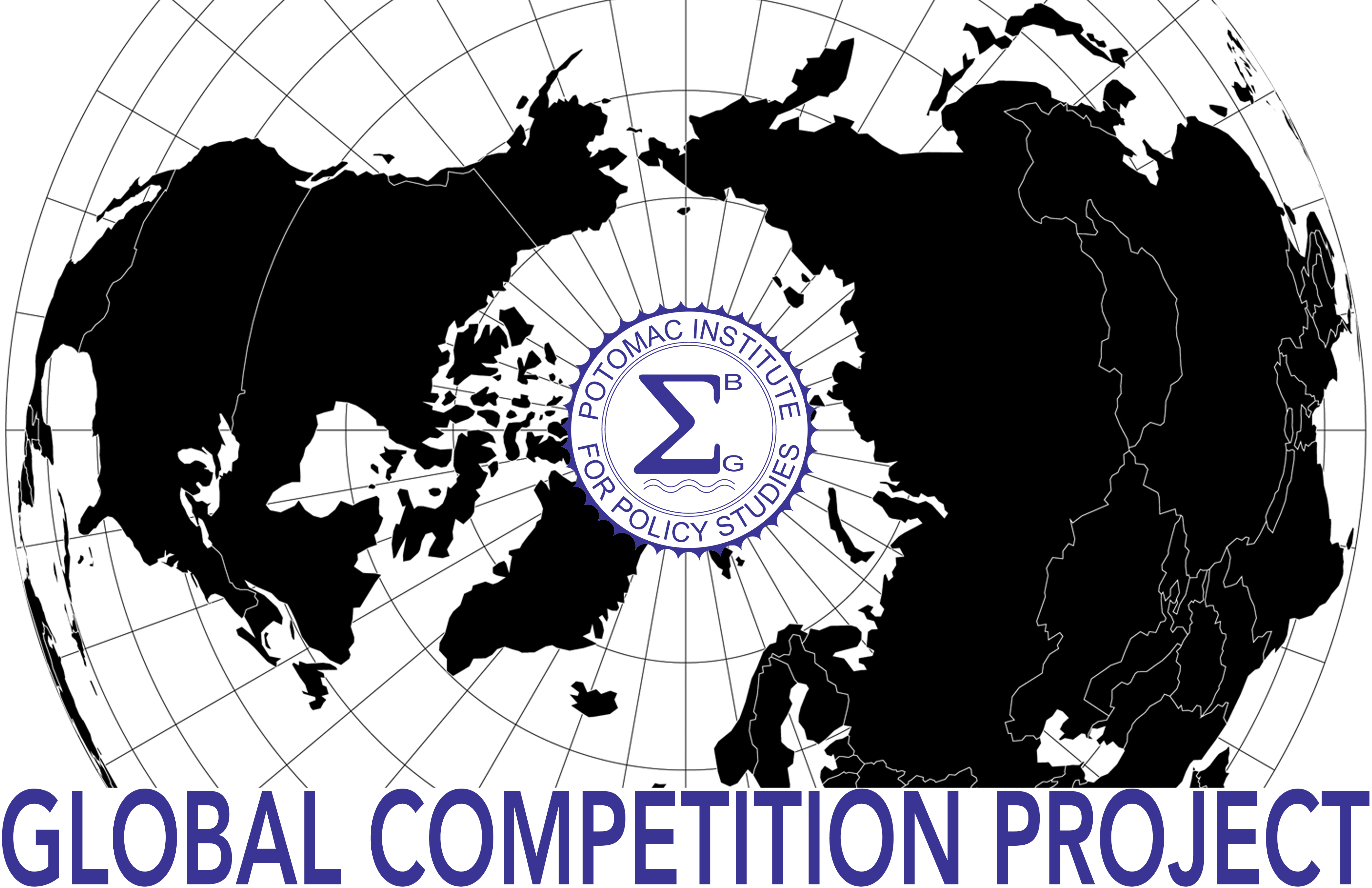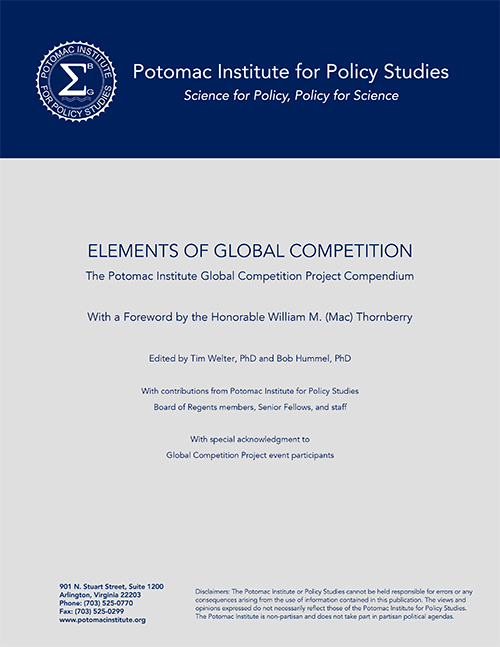Never in human history has an individual had the ability to communicate with so many others so easily. With technologies like the Internet, personal computers, and smartphones, a powerful reality has emerged: A simple message or piece of information, regardless of its origin or truth, can lend to unraveling the stability and success of a nation. A single posting to social media, can sway millions, if not billions. Indeed, the world is at an inflection point with regard access to and proliferation and manipulation of information at scale.
America’s global competitors have recognized and embraced the opportunities that come with that inflection. They have implemented strategic messaging campaigns to project narratives to help them pursue foreign policy and other national objectives, which include manipulating information to incite political and economic destabilization on the international stage. Examples range from Russia’s use of social media to manipulate the U.S. elections in 2016 and 2020, to the extensive Chinese censorship and disinformation campaigns used to cover up the imprisonment of ethnic minorities in concentration camps, to explaining the disappearance of political dissidents by the state. Each instance represents the shaping of information to influence thoughts and actions via widely available technology platforms; deliberate efforts to drive policy agendas. Strategic communication is a clearly elevated means to gain leverage in today’s globally competitive environment. However, the consequences, to include technological, biological, and psychological aspects of such campaigns and en masse information manipulation, have only just begun to be recognized by the United States.
Event Summary & Discussion
On December 1st, 2021, the Potomac Institute for Policy Studies, as part of its Global Competition Project, assembled a panel of subject matter experts and staff to examine the importance of strategic communication and national-level narratives as it relates to global competition. The panel discussion was led by Curtis Pearson, Vice President at the Potomac Institute, and included Jeff “Skunk” Baxter, Potomac Institute Board of Regents member and former advisor to NASA and U.S. Missile Defense Agency; Jody Moxam, Founder of PhaseOne Communications, and strategic marketing advisor; Dr. Rand Waltzman, Potomac Institute Board Regents member and Adjunct Senior Information Scientist at RAND Corporation; and Dr. W. Alex Vacca, Corporate Director for Strategy at Northrop Grumman and Advisory Board member at the Belin-Blank Center for Gifted Education and Talent Development at the University of Iowa.
The panel sought to understand the importance of a national narrative and how it may relate to gaining an enduring competitive advantage on the world stage. What is at risk if the U.S. fails to grasp the realities and opportunities of an increasingly interconnected world? Our core institutions? Is it our security and prosperity? How do we relay our nation’s priorities with clear intent and ultimately assure our competitive and effective deterrence without provocation?
Together, our distinguished panelists and staff discussed these key questions with the goal of establishing a foundation for policymakers and others across government to reference in creating solutions to assure America’s competitive advantage in an increasingly interconnected world.
Curtis Pearson: Strategic Messaging in Action & the Urgency for U.S. to Develop a National Narrative and Messaging Strategy
There are two stark examples of strategic messaging campaigns in action in recent news. The first involves the disappearance of Chinese women’s tennis superstar Peng Shuai after she posted a 1600-word accusation of sexual assault against a high-ranking Chinese Communist Party (CCP) official. Her accusation was removed shortly after it was posted, scrubbed from the Chinese social media platform Weibo. Its removal was accompanied by an oddly worded recant, reportedly written by Peng, posted to U.S. Twitter by a state-run Chinese news agency. Peng Shuai was not seen after the Twitter post until international calls for proof of her safety resulted in her appearance at a heavily curated event in Beijing on November 20th. The U.S. issued a statement asking for Peng’s whereabouts two weeks after her disappearance in response to this matter. Three weeks after her disappearance, the International Olympic Committee (IOC) posted a still of a video call between Peng and an IOC official. They declared that Peng seemed healthy and not under restraint. The IOC has since refused to release the full video.
In a clear move to control the narrative, Chinese state media accused the west of racism in questioning Peng’s safety and whereabouts and used Twitter bots (with zero followers) to continually retweet posts from Chinese state media. Additionally, China took the opportunity to paint the U.S. as an aggressor, ruffled about the U.S. naval presence in the Taiwanese Strait despite compliance with international maritime law.
The Peng Shuai incident demonstrates the CCP’s unabashed propensity for leveraging strategic messaging to sway its citizens and the rest of the world into seeing its version of reality: No matter how famous an individual is, challenge of the Party line (and by proxy the legitimacy of the CCP government) will not be tolerated. The scenario also demonstrated the disturbing influence the CCP had over a significant international institution. The IOC chose to enable rather than rebuke China’s behavior, no doubt an effort to curry favor with the CCP given the upcoming 2022 Winter Olympic Games in Beijing.
The second example involves recent news of Russian plans to develop and deploy the intermediate-range SSC-8 nuclear cruise missiles in Europe in direct violation of the 1987 Intermediate-Range Nucelar Forces (INF) Treaty. The lack of a clear and consistent response by the U.S. concerning this matter has left European allies feeling worried and Russia feeling emboldened. Conversely, Russia’s strategic messaging to the U.S. and the rest of the world is quite clear in the Federation sees itself as the most significant continental power in Europe, in fact a global power whose position is becoming more unassailable by the day.
The point of the two examples mentioned was to demonstrate how the global environment and the U.S. competitive position in that environment have become increasingly complex due to the strategic messaging campaigns consistently levied against the U.S. and the rest of the international community. The lack of a clear plan or strategy from the United States that communicates its position and indicates its intent through its intended audience’s cultural and political filters only further complicates the situation. It is a problem that has plagued multiple administrations and made increasingly complicated by the adversary/partner dichotomy that exist between the U.S. and nations like China, with which our economy is incredibly interdependent. While there is no easy answer to the current predicament, the need for a cohesive national-level narrative and messaging strategy was made extensively clear. Without such a narrative and messaging strategy, the ability of the U.S. to compete on the global stage will be severely limited.
Dialog to develop a national narrative and messaging strategy for the U.S. needs to occur at multiple levels across government. In that dialog, important questions must be answered if the emergent strategic messaging strategy is to be successful. Those questions include: What should the national narrative of the United States look like? How can a strategic messaging strategy effectively assist U.S. competitive advantage on the global stage? How can we assure our allies and adversaries can trust our message? How do we develop a narrative that is consistent across administrations? Lastly, how can we ensure our narrative and strategic messaging is not lost when translated across political, cultural, and language filters?
Jeff “Skunk” Baxter: Understanding the Extent of Strategic Messaging Campaigns
The first step in any effort to establish a strategic messaging narrative is to educate government officials and the population at large as to the extent of adversarial strategic messaging in our daily lives.
Recent documentaries, publications, and testimonies have highlighted the highly addictive nature of social media, physically and psychologically, acting as an unprecedented manipulator of emotion and thought. The concept of social media is by its very nature, addictive. All over the world, especially among younger generations, that addiction is catered to by entities wishing to communicate very specific messaging. Ironically, China is not just one of those entities, but they also produce most of the technological platforms (i.e., Phones, Tablets) by which that social media “drug” is delivered. Such corresponds with CCP efforts to gain regional and global influence, garnered, in part, via strategic messaging campaigns, worldwide. It is logical to assume that the social media vectors that influence so much of our lives in the U.S. can (and are) manipulated by the CCP in their effort to meet their strategic goals.
The adoption of these tools into the fabric of our society and our failure to recognize the extent by which potential adversaries exploit vulnerabilities of our culture via strategic messaging campaigns is of great concern. The operationalization of strategic messaging by our adversaries and their unprecedented access to the information consumed by the average U.S. citizen has left us in a fog. We fail as a society to recognize the influence our adversaries have over our daily lives. The complex and integral nature of this influence through social media, and its distributive technology, puts us inherently behind the curve in our efforts to establish a national narrative and strategic messaging campaign that combats those routinely applied to us.
Dr. Rand Waltzman: Revolutions in Technology altering the Strategic Messaging Landscape
Looking ahead to the future, the social media and information environment will continue to transform radically. Evidence to that end may be found in Facebook’s transition to “Meta” in form and focus, as it pivots toward a virtual reality (VR) based business model, unveiling a new “Meta Verse” line of VR technologies. While virtual reality concepts have been around for a long time in novels and video games, etc., it is only recently that technology has advanced enough to make those concepts a reality. Additionally, recent significant investments in VR technologies by companies like Microsoft (and now Meta) are all but certain to ensure those technologies can meet expectations for VR concepts in the future. Therein lies another facet to complicate the challenge of addressing the influence of strategic messaging by adversaries as they can potentially compound virility of their narratives by using advanced VR technology and social media.
The ability to manipulate audiences via VR technologies will undoubtedly grow exponentially, especially in instances where interpersonal and group dynamics overlap and can be exposed to strategic messaging. Simply put, public or private sector messengers will have the ability to launch highly targeted strategic messaging campaigns with unprecedented scale and effectiveness in the future leveraging VR technologies. If the U.S. expects to gain and hold competitive advantages over peer competitors using offensive and defensive aspects of strategic messaging, we must understand how groundbreaking and revolutionary technologies like VR might be used to that end.
Jody Moxham: Adapting Established Private Sector Practices for Government Strategic Messaging Development
We must achieve a basic understanding of what strategic messaging is and highlight its difference from other forms of communication in its purposeful design to produce a strategic outcome. Desired strategic outcomes may render the adoption of new ideas, establishment of norms and behaviors, narrative control, or steer the motivation of desired behaviors. An important maxim to remember when examining strategic messaging as a concept is that all forms of communication, be it educational or entertainment, can be coopted into strategic messaging campaigns.
While the concept of strategic messaging may be new (again) to the government and its role in national security, strategic messaging by the commercial sector has enormous precedent and has been used with great success. While there is a distinct difference in the stakes of using strategic messaging in the commercial sector versus national security, there are certain transferable principles with proven success on the commercial side that can work for government too.
These surrogate principles incorporate into a broader, demonstrably proven four-stage strategic messaging process. Stages include planning, development, execution measure, and evaluation. When applied to potential strategic messaging initiatives by the government, the planning stage is arguably the most important, most time-consuming, and unfortunately, the most underdeveloped and least understood part of the process. If the government is to adopt strategic messaging as a deliberate means to gain competitive advantage on the world stage, it must learn from the commercial sector’s established methodology and framework and explore how it might best be adapted to meet national security needs.
Dr. W. Alex Vacca Strategic Messaging in a Historical Context
There is precedent in using strategic messaging as a tool for pursuing foreign and domestic policy agendas. While there are examples littered across history, one of the most successful was used by Russia in early 20th century. At the time, Russia was one of the more underdeveloped powers in Europe. In terms of industrial capacity and military might, it had very little to compete with more industrialized powers like German and Great Britain. To circumvent those material deficiencies, Russia developed principles for messaging strategic narratives that we recognize today as tenets of information warfare.
One of the key principles of strategic messaging developed and exploited by Russia at the time was reflexive control. Reflexive control involves understanding how your adversary thinks from dispositional and psychological points of view. Russia discovered that by using the reflexive control principle, it could manipulate the information environment to the point where its geopolitical adversaries thought they were making choices that seemed to benefit them, but were really aligned with Russia’s agenda.
Fast-forward 100 years to present-day. The flow and availability of information via technological advances has transformed the ability for one nation to more easily understand the motivations of another, especially useful if targeting that nation to manipulate it toward an agenda. To that end, modern globalization and the proliferation of information sharing among open, liberal societies like the United States have made it significantly easier for propagators of strategic messaging campaigns to (nefarious in motivation, or not) to undermine the fabric of belief systems and institutions, essentially making citizens of liberal democracies easier to targets for manipulation via strategic messaging.
Conclusion and Key Takeaways
•Strategic messaging should always orientate towards achieving strategic goals.
• Strategic messaging itself will not achieve a desired outcome; it must be paired with matching policy and planning.
• Strategic communications should be viewed as an element of combined arms warfare. It is not just a pre-conventional conflict tool.
• We must educate government and industry leaders on the vulnerabilities of our society to strategic manipulation by adversaries.
• Advancements in communications technology allow for the micro-targeting of individuals on a massive scale.
• The injection of chaos, delivered via strategic messaging, can change the international order. Short-term chaos injected into our society by adversarial manipulation may be serving long-term goals.
• When it comes to strategic messaging, our failure isn’t in our adaptation of procedures or techniques; it’s in our inability to have something to say. Simply put, we lack a national agreed-upon narrative of who the U.S. is and how we should relay that to the world.
• The lack of an agreed-upon national narrative leaves the U.S. susceptible to strategic manipulation campaigns by our adversaries.
• The foundation for a national narrative may be derived from shared core principles, relayed in our nation’s founding documents (Constitution, Declaration of Independence, Bill of Rights, etc.).
• Our ability to know, defend, and speak to the nation’s core values is essential to establishing a national narrative.
• The best defense against strategic messaging campaigns is to speak the truth. The closest truth in which you can get the plurality of Americans to agree on is likely one reflective of our founding principles.




 Having worked in the private sector, the military, and on Capitol Hill, Tim Welter brings valuable experience in national security and defense policy to the Institute. After serving on active duty in the Air Force for several years, he worked on Capitol Hill as Legislative Director for two different Members of Congress and later as a Professional Staff Member with the House Veterans Affairs Committee. Upon leaving the Hill, Tim worked with the foreign and defense policy research team at the American Enterprise Institute. He later completed a research fellowship at the National War College during which he finished his Ph.D. dissertation in Political Science with the University of Missouri, writing about the political nature of defense policy in Congress. A U.S. Air Force Academy graduate, Tim holds Master’s degrees in Political Science, National Security Strategy, and Management. Just prior to joining the Institute, Tim served at the Pentagon where he helped stand up an organization dedicated to future force design and the development of capabilities and concepts required to meet to emerging national security challenges.
Having worked in the private sector, the military, and on Capitol Hill, Tim Welter brings valuable experience in national security and defense policy to the Institute. After serving on active duty in the Air Force for several years, he worked on Capitol Hill as Legislative Director for two different Members of Congress and later as a Professional Staff Member with the House Veterans Affairs Committee. Upon leaving the Hill, Tim worked with the foreign and defense policy research team at the American Enterprise Institute. He later completed a research fellowship at the National War College during which he finished his Ph.D. dissertation in Political Science with the University of Missouri, writing about the political nature of defense policy in Congress. A U.S. Air Force Academy graduate, Tim holds Master’s degrees in Political Science, National Security Strategy, and Management. Just prior to joining the Institute, Tim served at the Pentagon where he helped stand up an organization dedicated to future force design and the development of capabilities and concepts required to meet to emerging national security challenges.